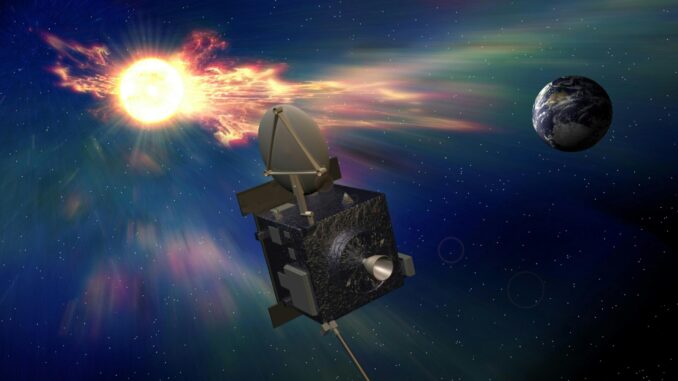
The European Space Agency (ESA) has selected Airbus to design and build a space weather forecasting satellite known as Vigil for what will ESA’s first mission in its Space Situational Awareness (SSA) Programme boosting space safety.
Once in orbit, Vigil will provide vital early warning abut space weather, particularly solar storms, that are heading towards earth potentially causing disruption such as disrupting other satellites or power infrastructure.
Patrick Wood, Head of Space Systems UK, Airbus Defence and Space said: “Vigil is one of the most exciting and important space missions that will not only improve our understanding of the Sun’s behaviour but crucially provide us with earlier warning and greater precision about potentially damaging solar weather. Space weather forecasters will be able to see what is coming from the Sun and provide more accurate alerts.”
Vigil will be positioned at Lagrange point L5 on the same orbit as the Earth, 150 million km behind it as the Earth orbits the Sun. This will enable Vigil to see the Sun as it rotates, and see the size and speed of solar weather heading towards the Earth. Data from Vigil could provide notice of four to five days of solar winds streaming toward Earth.
From this position, Vigil will be able to work with other satellites monitoring the Sun from closer to the Earth.
Andrew Griffith MP, Minister for Space at the Department for Science, Innovation and Technology, said: “Space weather generates stunning phenomena like the recent displays of the Northern lights over our skies – but it also presents a real risk to our way of life which is increasingly dependent on space and satellite services. The Vigil mission will transform our understanding of the impact of potentially dangerous solar events and I congratulate Airbus here in the UK on taking the lead in this important mission.”
Coronal mass ejections (CMEs) from the Sun contain magnetised plasma containing protons, electrons and other charged particles which can damage power systems.
In 1989 a major geomagnetic storm hit Earth causing power outages across Quebec, Canada. More recently a large CME led to the Aurora Borealis being visible across the UK and Northern Europe.
“Vigil will be Europe’s first 24/7 operational space weather satellite, providing valuable time to protect critical infrastructure such as power grids or mobile communication networks on Earth as well as valuable satellites in Earth orbit, including the International Space Station ISS,” said Josef Aschbacher, ESA Director General. “Vigil will drastically improve both the lead time of space weather warnings as well as their level of detail from its unique vantage point in deep space.”




